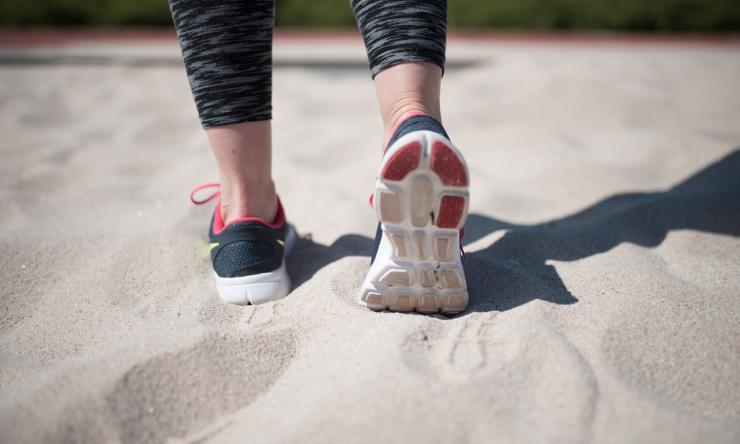Step into the new year with the right shoes

If the shoe fits, you’re on the right track to achieving your resolution for a healthier 2019, according to a podiatrist at Baylor College of Medicine. He offers tips for picking the right shoe no matter what your physical activity resolution may be.
“The right shoe is important for a runner as much as a good tennis racket is important for a tennis player,” said Dr. Ronald Lepow, assistant professor in the Joseph Barnhart Department of Orthopedic Surgery at Baylor.
While there is a range of prices for athletic shoes, Lepow said that you don’t have to spend $500 to get good ones. The type of shoes you select should be based on your planned level of activity, he said. The construction, weight and wear of shoes will be different depending on the type of activity they are designed for. A training flat offers more protection and is well-suited for weekenders or those who plan to do moderate exercise. Running shoes are built for heel to toe movement and the higher heel drop comes from the added support and cushioning. These shoes are good on tracks and for races. Training shoes are usually more flexible and allow a wide range of movement and they are good to wear in the gym.
A pair of running shoes should not exceed 200 to 250 miles or six to eight months of use. Putting a number of excess miles on a shoe will cause the shoe to deform, which can lead to foot and leg problems as well as musculoskeletal problems in the knees, hips and back. Take a look at the tread on the shoes to get an idea of the wear.
Athletic shoes should be a half size or full size larger than your regular shoe size. There should be a thumb nail’s distance between the end of your big toe and the end of the shoe, and you can determine that once you are standing with the shoes on and laced up.
There are consequences to picking the wrong shoe, including injury, pain and discomfort after exercise. Ailments that you are not familiar with, such as back or hip pain, shin splints or cramps could be signs that you don’t have the right shoe.
Some shoe manufacturers offer shoes for pronation (flat feet) or supination (high arched feet), and Lepow said that these can be helpful, but if they are not it may be a sign that you need a more custom fit orthotic from a foot and ankle specialist.
For runners, Lepow also recommends running on terrains such as pine bark, dirt or grass rather than concrete, which can be harmful to the feet, lower legs and back.
People sometimes think they can wear their everyday shoes for a walk, but it’s best to change into an athletic shoe, which will help prevent a stress fracture or other injuries.
While online shopping is getting increasingly popular, Lepow said there is no real replacement for going to the shoe store, trying on the shoes and walking around in them in the store. Once purchased, he recommends wearing them around the house to determine if there are any problems before wearing them for an athletic activity. However, if you choose to shop online, be sure to be aware of the return and exchange policies on the purchase.
If you have not been particularly active and it is your resolution to do so this year, be sure to see your family doctor for a general health checkup. A podiatrist also can determine foot health ahead of a new physical activity routine.










